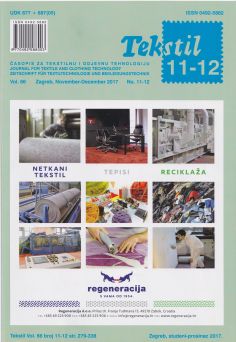Silk in Croatia - the history and nowadays
Keywords:
silk, mulberry silkworm Bombyx mori, production, revitalization University of ZagrebAbstract
Although the annual worldwide production of silk is relatively small and accounts for only about 0.2 % of the world fiber production and about 0.4 % in the group of natural fibers, the significance of silk due to its exceptional aesthetic characteristics and the comfort it provides is much more considerable. The cultivation of silkworms is neither associated with noticeable financial investments nor is it, as in the production of other natural fibers, exposed to risks of climate changes (plant fibers) or health disorders (keratin fibers). There are several reasons for the production of raw silk in cottage industry, and first of all it is the possibility of improving the financial status of the rural population due to the fact that the production of raw silk is inexpensive, and by placing silk fibers on the market solid earnings can be achieved. Silk has a long history that began 4000 years ago with the development of the skills of the Chinese to cultivate silk worm for textile fiber production. Since then, silk has been highly valued due to its excellent properties such as fineness, noble luster of silk, softness and suppleness, and extremely comfortable hand or feel and drape - whether it is fluttering in unweighted or heavy and rustling in weighted silk. Sericulture in Croatian regions has a centuries-old continuity and was one of the most important economic cultures since the end of the 18th century until the first half of the 20th century. Today, sericulture has almost disappeared in Croatia, but there is still respect for silk and fabrics embroidered with silk In almost all local museums, and particularly in the Croatian ethnographic museums, clothing and decorative items of our ancestors, which are embroidered with silk, are kept.Downloads
Published
2017-12-29
How to Cite
[1]
Brunšek, R., Andrassy, M. and Jakirčević, A. 2017. Silk in Croatia - the history and nowadays. Tekstil. 66, 11-12 (Dec. 2017), 297–309.
Issue
Section
Review article
License
Copyright (c) 2017 Hrvatski inženjerski savez tekstilaca

This work is licensed under a Creative Commons Attribution 4.0 International License.

